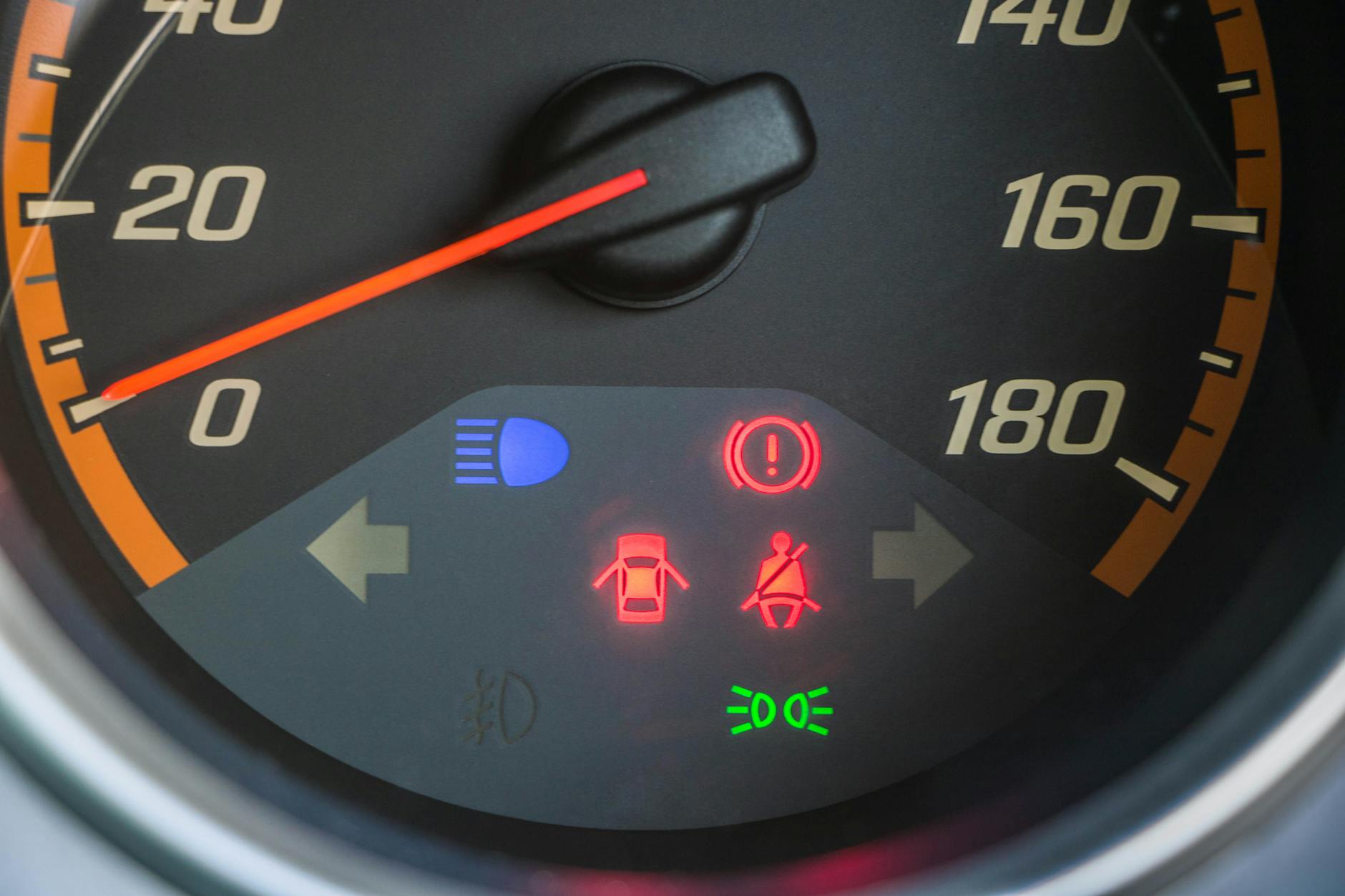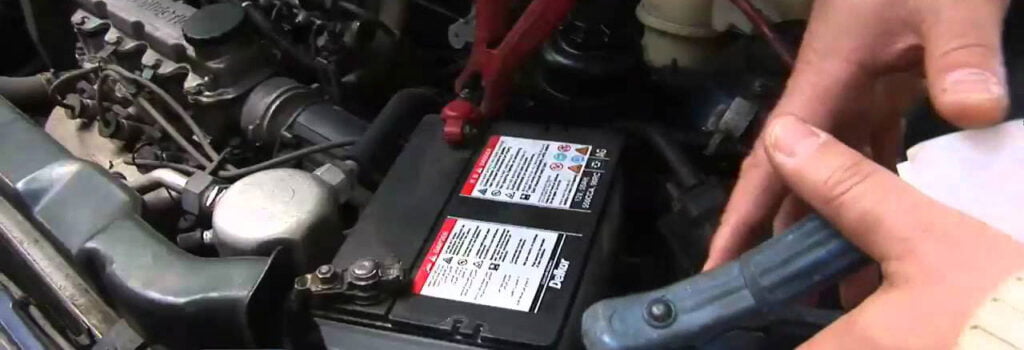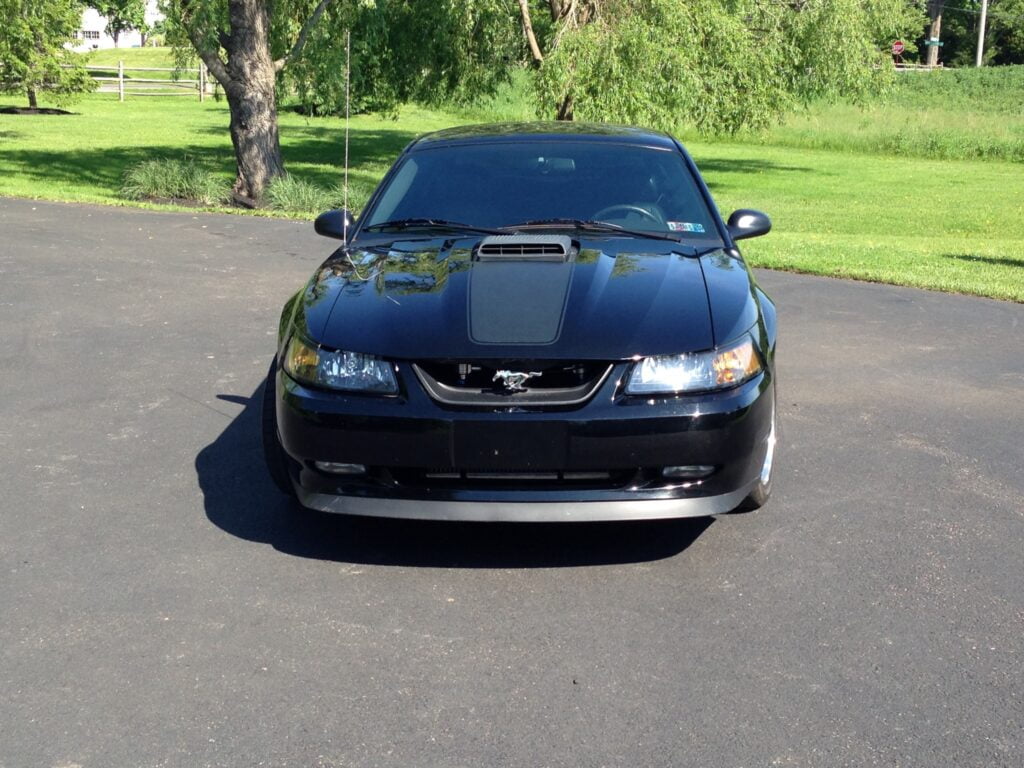Most drivers see dashboard warning lights as just another part of owning a car, but those glowing symbols do a lot more than just light up your dash. They’re your vehicle’s way of telling you something isn’t right, whether it’s low oil, a failing battery, or brake trouble. These alerts help you catch problems early—before a minor issue becomes a big, expensive repair.
Ignoring warning lights puts your safety and your car at risk. Serious warnings, like those for brakes or oil pressure, can mean danger on the road if left unchecked. Taking dashboard lights seriously keeps your vehicle running smoothly and protects you from roadside trouble.
Decoding Dashboard Warning Lights
Dashboard warning lights are your car’s early warning system. These signals help you recognize when your vehicle needs attention—sometimes urgently. If you know what the colors mean and which warnings are the most serious, you’re already ahead of the game. Newer vehicles have added even more indicators, but the core message stays the same: don’t ignore what your car is telling you.
The Meaning Behind Colors: Red, Yellow, and Green
 Photo by Md Iftekhar Uddin Emon
Photo by Md Iftekhar Uddin Emon
Interpreting dashboard lights starts with color. Manufacturers use standard colors to help you judge urgency at a glance:
- Red: Stop right away—there’s a serious problem that can threaten your safety or damage your car. Think overheating engines, failing brakes, or major oil issues.
- Yellow (or Orange): Pay attention soon—something needs to be fixed or checked, but it’s not a drop-everything emergency. Issues like tire pressure or sensor faults often show up in yellow.
- Green (or Blue): Relax—these colors reassure you that features like headlights, cruise control, or turn signals are switched on. They’re informational, not warnings.
This color system acts a lot like a traffic light. Red means stop, yellow means caution, and green means go (or everything’s good).
Top 5 Warning Lights You Should Never Ignore
Out of all the glowing icons, a few stand out as serious red flags. These are the top dashboard warning lights you should never, ever let slide:
- Check Engine Light
- What it means: Can signal anything from a loose gas cap to major engine trouble.
- Risk: Ignoring this could turn a small repair into a big bill or even a breakdown. It covers a wide range of issues, so never brush it off.
- Oil Pressure Warning
- What it means: Oil isn’t circulating properly in your engine.
- Risk: Continuing to drive with low oil pressure can kill your engine. Pull over and turn off the car if this appears. Get it checked immediately.
- Brake System Warning
- What it means: There’s a problem with your braking system—brake fluid might be low, pads could be worn, or the anti-lock system (ABS) might be down.
- Risk: Brake failure increases your risk of accidents. If you see this light (especially in red), stop and address it as soon as possible.
- Engine Temperature Warning
- What it means: Your engine is overheating.
- Risk: Overheating can cause expensive damage, even leading to engine failure. Pull over if it’s safe and let the engine cool.
- Battery/Charging Warning
- What it means: The charging system isn’t working as it should—possibly a failing battery or alternator.
- Risk: A dead battery could leave you stranded. Don’t wait; get the electrical system checked before the car won’t start.
By paying attention to these warnings you can prevent breakdowns—and avoid much higher repair costs.
Modern Vehicle Features and Their Unique Indicators
Today’s vehicles come packed with extra tech, and with it, new warning lights. They go beyond basic engine and brake alerts to include features aimed at improving your driving experience and safety.
Here are some of the most common modern alerts:
- Adaptive Headlights Indicator: Tells you when your headlights are adjusting for curves or hills. If this light warns of a fault, your night visibility could be reduced.
- Traction Control/ESC Light: Flashes or stays lit if your traction control or electronic stability system kicks in or develops a fault. A blinking light during wet or icy conditions means your car is fighting to keep grip—slippery ahead!
- Lane Departure Warning: Appears when you drift out of your lane without signaling. If this icon stays on, your lane-keeping system could need calibration.
- Forward Collision Alert: Flashes or beeps to warn about a possible front-end crash risk, often paired with autonomous braking systems.
- Tire Pressure Monitoring System (TPMS): Modern cars show tire pressure issues with a yellow light, alerting you to check for slow leaks or flats.
As cars get smarter, drivers face more symbols and sounds. If you’re ever unsure, check your owner’s manual. Don’t take chances—an unfamiliar light today could become tomorrow’s headache if you ignore it.
Consequences of Ignoring Dashboard Warning Lights
Most drivers know those little glowing icons mean something—but many still postpone acting, or just hope the problem goes away. Overlooking a warning light can invite quick trouble or set the stage for wallet-busting repairs later on. When those alerts show up, they’re not just nagging—they’re your car’s way of shouting for help. Ignoring them puts you, your car, and sometimes your entire business at risk. Let’s look at what can really happen when you push warning lights to the back of your mind.
Short-Term Risks: Immediate Safety Hazards
When you brush off that amber or red warning, you may put yourself in real danger—often sooner than you think. Statistics show:
- Nearly a third of drivers (31%) experience a breakdown, accident, or vehicle damage after ignoring warning lights.
- 18% of drivers admitted to having a breakdown because they ignored dashboard alerts.
Here are the real-life hazards you could face:
- Sudden breakdowns: Those stranded-on-the-side-of-the-road moments usually start with an ignored warning.
- Brake or steering loss: A glowing brake or steering light can mean dramatically reduced stopping power or control—putting you, passengers, and others at risk.
- Engine overheating or fire: Disregarding an engine temperature or oil pressure light could lead to overheating or, in rare cases, a fire.
- Reduced visibility or performance: Lights alert you to failing bulbs, wipers, or sensors—letting them slide can turn a rainy drive into a harrowing experience.
The bottom line? Warning lights are often the last chance to prevent something far worse. That “it feels fine” mindset is why so many end up calling for a tow.
Long-Term Damage: Costly Repairs and Voided Warranties
What happens if you keep driving with a warning light on? Problems rarely fix themselves—neglect only makes it worse. The longer those alerts are ignored:
- Small fixes become major overhauls. Minor leaks can turn into failed engines or transmissions.
- Repair costs soar. Parts prices rose over 7% last year, and letting an issue snowball means a pricier repair bill down the road.
- Warranty coverage can disappear. Many manufacturers void warranties if they find you drove with an active warning light and ignored service intervals. That means you’re on the hook for every dollar.
Common reasons drivers ignore lights include:
- Fear of repair costs
- Belief the problem is minor because the car “still drives fine”
- Uncertainty or confusion about what the light actually means
- Putting off repairs due to lack of time
- Overestimating their ability to “get by” without immediate attention
Delays only hurt your wallet and car’s health. Ignoring oil or coolant warnings can seize your engine. Neglecting ABS or brake lights can ruin brake systems, costing triple what basic maintenance would have.
 Photo by Evgeniy Lejnev
Photo by Evgeniy Lejnev
The Commercial and Legal Impact
For businesses operating fleets, dashboard warning lights are more than a nuisance—they’re a major risk factor.
- Higher Insurance Premiums: Accidents or claims linked to ignored warnings can increase rates for years.
- Fleet downtime: Ignored alerts often result in unscheduled repairs or out-of-service vehicles, hitting productivity and delivery promises.
- Legal liability: If a crash is traced to ignored dashboard alerts (like a brake system failure), drivers and fleet owners might be found negligent. Claims can run into the thousands—or more.
- Reputation loss: Regular breakdowns or accidents can put a business’s reputation on the line, harming relationships and future contracts.
Ignoring warning lights doesn’t just affect your monthly budget—it can land drivers and companies in hot water, both legally and financially. Staying alert protects more than just the vehicle; it shields your business and your bottom line.
The evidence is clear—ignoring dashboard warning lights is never harmless. The risk grows every mile you wait, whether it’s your family vehicle or the lifeblood of a fleet.
Why Drivers Ignore Warning Lights: Psychology and Misconceptions
Dashboard warning lights are meant to catch your attention, but too often, drivers tune them out. The reasons go deeper than just being busy or forgetful. Many drivers have picked up habits and beliefs that make it easy to brush off that glowing symbol, even when it could signal a major issue. From false confidence to worries about repair bills, it’s more than just not noticing—it’s about how people think and what they believe about their cars.
Common Misunderstandings About Warning Lights
Many drivers see dashboard warnings as optional suggestions rather than must-fix alerts. These are some of the most common misconceptions that regularly trip drivers up:
- Not all warnings mean the same thing.
A yellow light doesn’t mean you’re fine to drive for weeks, just as a red light isn’t always an instant emergency—drivers often swap urgency between lights, acting too slowly on serious alerts or panicking over minor ones. - “If the car feels fine, it must be fine.”
Many think the car will “act up” if something’s really wrong. In reality, some of the costliest issues show no signs you can feel or hear—only a warning light. - Dashboard myths:
- Some believe disconnecting the battery “fixes” a check engine light. This may reset the warning, but the problem will come right back—and you risk wiping out other important diagnostics.
- Others think mechanics are the only ones who can diagnose dashboard codes. However, affordable scanners and even phone apps let anyone check what’s wrong.
- Check engine light panic (or dismissal):
A common myth is that this light always signals a catastrophic engine failure. Actually, it might be something as small as a loose gas cap or a glitchy sensor. But ignoring it risks bigger, hidden problems under the hood.
These mistaken beliefs lead many drivers to wait it out, hoping for the best—or dismiss genuine risks that need quick action.
The Knowledge Gap: Lack of Dashboard Symbol Literacy
A huge part of the problem is that most drivers simply don’t know what their dashboard lights really mean. Recent data highlights just how widespread the confusion is:
- Nearly 49% of drivers currently have at least one warning light on and keep driving anyway.
- Only 7% of drivers in a recent study could identify all the dashboard symbols in their car.
- The average driver only understands about 45-47% of the dashboard signals.
- Younger drivers (18-24) are more likely to be confused, with just 33% correctly identifying common alerts, compared to 56% of drivers over 65.
 Photo by Erik Mclean
Photo by Erik Mclean
- Low tire pressure, emissions control, and engine management warnings are among the most misunderstood lights—less than 11% can name them all.
- Even critical alerts—for things like brakes or oil—aren’t always clear. Nearly half of drivers can’t spot a tire pressure symbol, and almost as many don’t recognize brake warnings.
This knowledge gap leaves lots of room for problems to slip through the cracks. When drivers can’t identify the warning, they’re less likely to take it seriously. In the end, your dashboard becomes less a safety net and more like background noise.
Cost Concerns and Deferred Repairs
Money worries are another strong reason drivers ignore dashboard alerts. Many assume that any repair will be expensive, and postponing seems safe—especially if the car’s still running.
Here’s how cost fears and the urge to save now cause drivers to delay action:
- Fear of sticker shock:
The thought of high repair bills is enough to make most people put off visiting the mechanic. Important repairs like a catalytic converter or ignition coil can run hundreds or even thousands of dollars. - “It’ll go away on its own.”
Some hope a problem will resolve itself. But warning lights don’t vanish for no reason—waiting often means a simple fix turns into a much bigger issue. - Budget triage:
With rising living costs, car repairs slip down the list of priorities. Many households simply can’t afford a sudden, big expense—so they drive on, hoping for the best. - Perceived hassle and time:
Besides cost, people delay repairs to avoid missing work or waiting for a shop appointment. Time is money, and many gamble that it can wait a little longer.
What’s important to realize is this: waiting almost always leads to larger bills later. Dealerships and warranty companies warn that ignoring early alerts often voids coverage and raises long-term costs—turning what could have been a $100 fix into a $1,000 one.
Ignoring your car’s warning lights is a bit like ignoring your own health symptoms. It might feel easier in the short term, but it only piles up trouble for the future.
Expert Tips: What To Do When a Warning Light Comes On
When a dashboard warning light turns on, it calls for quick and careful action. Ignoring these signals is a gamble with your safety and your wallet. Acting fast can protect your car from major damage and keep you safe on the road. Here’s how to respond with confidence, whether you’re facing a critical alert or a mysterious check engine light.
Immediate Steps for Critical Alerts
 Photo by Srattha Nualsate
Photo by Srattha Nualsate
When a red warning light pops up—like low oil pressure, overheating, or brakes—don’t wait. These alerts mean your car could be on the verge of a breakdown or worse. Here’s what you should do right away:
- Pull over safely:
Find a safe spot off the road. Don’t push your luck, even if the car “feels” fine. - Shut off the engine:
If it’s an engine, oil, or temperature warning, turn the engine off to prevent lasting damage. - Check your owner’s manual:
Your manual will tell you exactly what the light means and if it’s safe to continue. - Look under the hood (if safe):
Check for smoke, leaks, or strange smells. Don’t remove the radiator cap on a hot engine. - Call for help:
If you’re unsure what’s wrong, or see smoke or fluids leaking, call roadside assistance or a mechanic. Don’t risk driving further. - Warn others:
Use hazard lights or warning triangles if you’re stuck in a dangerous spot.
Stay calm—these steps give you the best shot at safety while letting professionals take it from there.
Understanding Fault Codes and Onboard Diagnostics
Today’s vehicles keep a record of almost every issue through a system called OBD-II (On-Board Diagnostics). When a warning light like the check engine symbol appears, the car’s computer stores a trouble code.
Using an OBD-II scanner is simple:
- Locate the port:
Usually found under the dash near the steering wheel. - Plug in the scanner:
Most devices snap right in—no tools needed. - Turn the key to “on”:
The engine should stay off during scanning. - Read the codes:
The scanner will show a code (likeP0301). Look it up in the scanner’s guide or online to see what it means. - Decide what’s next:
Some issues are minor, like a loose gas cap, but others need a mechanic right away.
- Basic scanners: Good for reading and clearing codes, handy for DIY checks.
- Advanced tools: Pros use these for deeper system checks.
Using a scanner takes some guesswork and stress out of the process. Even if you’re not fixing the car yourself, bringing the code to your mechanic can speed things up and help you avoid unnecessary repairs.
Routine Maintenance to Prevent Warnings
A lot of warning lights can be avoided with steady, simple care. Prevent those surprise alerts with the right habits:
- Regular oil changes:
Follow your owner’s manual. Oil that’s too old or low leads to expensive engine repairs. - Check fluids monthly:
Monitor coolant, brake fluid, power steering fluid, and washer fluid. Low levels trigger lights and can cause damage. - Tire checks:
Look for proper inflation and even tread. Low tire pressure not only throws a dashboard warning, but also hurts gas mileage and safety. - Replace filters:
Clean air and fuel filters help the engine breathe and run well. Dirty filters trigger warnings and reduce performance. - Battery checks:
Weak or old batteries can set off warning lights and leave you stranded. Test yearly or before seasons change. - Listen for the unusual:
Pay attention to squeaks, knocks, or other odd sounds. Addressing them early can prevent lights and lasting trouble.
By making these habits part of your routine, you’ll catch small issues before they set off any warning lights—or turn into big repairs down the road. Prevention keeps that dashboard quiet and your drives stress-free.
Conclusion
Dashboard warning lights aren’t just extra features—they’re your first defense against breakdowns and expensive repairs. Acting when a light appears means you stay safer and save money in the long run. The more you know your dashboard, the more control you have over your car’s health. Take warning lights seriously. A quick response today could prevent a costly problem tomorrow.
Thanks for reading. Share your own dashboard warning stories or tips in the comments, and keep an eye out for more practical advice on getting the most from your vehicle.




